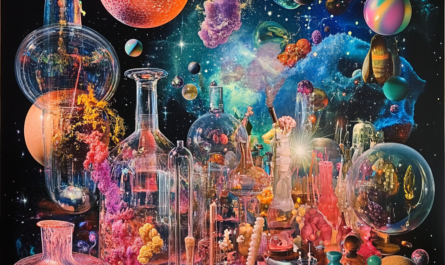Visual perception plays a key role in how customers respond to messages. In a world where consumer attention is held in seconds, well-designed visual content can be a critical factor in success. Messages that are eye-catching and interesting are more memorable and therefore more effective.Aesthetics and content work together, creating a unified experience that the customer receives from the brand.
Fundamentals of Visual Perception in Marketing
To successfully create visually appealing messages, it is important to understand the basics of visual perception. First of all, these are the principles of balance, contrast and composition. Balance helps create harmony in design elements, contrast helps highlight key parts of the message, and composition determines the overall feel of the content. For example, using white space around key elements can increase their significance and make them easier to read.
Another important aspect is simplicity. Cluttered designs often cause confusion and distract the client’s attention. A simple, concise design that focuses attention on the main thing will always be more effective than complex compositions. It is worth remembering that each element should carry a semantic load, and not just decorate the message.
The Role of Color and Fonts in Creating Impactful Messages
Colors and fonts are two key tools that help shape the impression of visual content. The correct choice of these elements can enhance the emotional response, attract attention and form associations with the brand. Here are some principles to help you work with colors and fonts:
- Use a limited color palette. Too many colors create chaos and distract from the message. Choose primary and secondary colors that harmonize with each other.
- Consider the meaning of colors. Each color evokes certain emotions. For example, blue is associated with trust, while red attracts attention and evokes a sense of urgency.
- Work with readability. Fonts should be easy to read. Avoid complex, decorative fonts in key messages.
- Highlight what’s important. Use contrast between font and background to highlight important elements.
- Follow the brand’s style. Colors and fonts should be consistent with the overall company identity.
Proper use of color and fonts makes messages more structured and understandable to the audience.
Using images and graphics to enhance perception
Quality images and graphics are powerful tools that help amplify your message. They allow you to quickly convey meaning, evoke emotions and attract attention. For example, visualizing complex information using infographics makes it easier to understand.
Images must be of high quality and relevant to the context of the message. You should not use generic or overly hackneyed stock photos, as they may cause mistrust among the audience. Graphic elements, such as icons or diagrams, add structure and make text easier to read.
The key is to balance between visual and textual content. Images should complement the text, not distract from it. Using a consistent style in graphics and illustrations will help strengthen the visual image of the brand.
Principles of visual hierarchy: how to highlight the main thing
Visual hierarchy is the order in which design elements attract the viewer’s attention. Correct prioritization allows you to direct the client’s gaze to the most important parts of the message. The main tools here are size, contrast and placement. For example, a large headline immediately attracts attention, while less important details remain in the background.
The central idea should be noticeable at first glance. This could be a keyword, an image, or an action button. To create a hierarchy, it is important to use a logical sequence of elements, avoiding unnecessary complexity. Simplicity and clarity are two basic principles that allow the audience to quickly understand the message and make a decision.
Mistakes to Avoid When Creating Visual Content
Despite the obvious benefits of visual content, its creation is often accompanied by errors. One of the most common is excessive design complexity. Overcrowded pages or messages can confuse your audience and cause them to turn off.
Another common mistake is a mismatch between visual design and content. For example, a flashy, provocative design may not be appropriate for serious or professional themes. You should also avoid using low-quality images, which spoil the overall impression and reduce brand trust.
Creating visually compelling messages for clients is an art that requires a combination of creativity, strategy and knowledge. Properly designed visual content helps not only to attract attention, but also to retain it, ensuring memorability and evoking positive emotions.
Effective design begins with understanding the basics of visual perception and choosing the right tools, such as colors, fonts, images and graphics. However, it is important to remember that every design element should work towards the purpose of the message and not distract from it. The balance between simplicity and creativity allows you to create content that not only looks beautiful, but also effectively conveys information to the client.
To achieve maximum impact, companies must consider the specifics of their audience and the context in which visual content is used. Visual elements are not just decorations, but important tools that can significantly influence brand perception and customer trust.
Ultimately, the key to success in creating visual messages is constant testing and improvement. By studying customer feedback and analyzing their behavior, companies can refine their approaches and create truly unique visual experiences that will provide them with a competitive advantage.
For e-commerce, it is better to use a minimalist style with an emphasis on the product. Clean design, large product images, and clear calls to action provide a seamless customer experience and increase conversions.
To avoid overload, you should use a limited number of colors, simple fonts and a minimum number of decorative elements. Each design element should be functional and complement the main message of the message.




